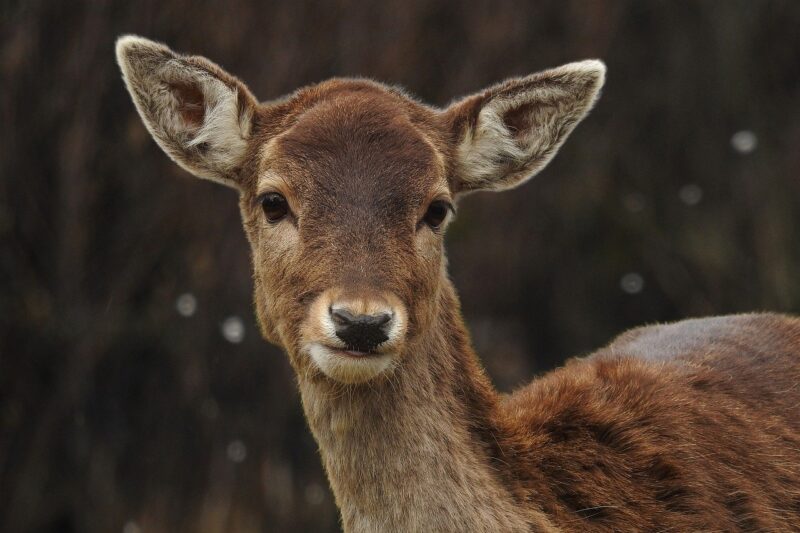Wonders of the Wildlife: Discover the World’s Most Captivating Animal Behaviors
November 17, 2024

The animal kingdom is a treasure trove of fascinating behaviors that reflect the complexities of nature. Countless species show remarkable adaptations and social structures, from the majestic to the bizarre. This article delves into some of the most captivating animal behaviors that illustrate the wonders of wildlife, showcasing the incredible intelligence, instinct, and emotion found within our planet’s diverse ecosystems.
1. The Art of Communication: How Animals Talk
Humans often believe that they are the most articulate creatures, but animals possess their own unique ways of communication. From the intricate dances of bees to the complex songs of whales, animals have evolved sophisticated methods to convey information.
For instance, the waggle dance of honeybees plays a crucial role in foraging. By performing a series of movements, these bees inform their hive mates about the direction and distance of resource-rich flowers. This dance not only demonstrates their communication skills but also their impressive navigation abilities.
Similarly, whales communicate using a variety of sounds and frequencies, creating underwater melodies that resonate over vast distances. Each species has its own dialect, showcasing a form of culture unique to their kind. Besides, studies have shown that elephants communicate through infrasound—a frequency below human hearing—which can relay messages across several kilometers.
2. Survival of the Fittest: Unique Hunting Strategies
Predation strategies vary widely across species, demonstrating the adaptability and ingenuity of the animal kingdom. For example, predators have developed unique hunting techniques to optimize their chances of success.
Consider the African wild dogs</strong;. They employ a cooperative hunting strategy, working as a team to pursue prey. Their teamwork significantly increases their success rate, making them one of the most effective hunters in the animal kingdom. Each dog takes on a specific role: some chase, while others corner or ambush the target.
In contrast, the anglerfish uses a bait-like lure that protrudes from its head to attract unsuspecting prey. The fishing technique is so effective that it has captivated scientists for years as they study evolutionary traits among deep-sea creatures.
3. Social Structures: The Intricacies of Animal Societies
Many animal species exhibit complex social structures that dictate their behavior. From communal living to hierarchical systems, these interactions are crucial for survival.
For example, meerkats live in cooperative groups known as clans or mobs. They exhibit social behaviors such as grooming and food sharing, and they take turns standing guard to watch for predators while others forage. This aspect of social responsibility ensures the safety and sustenance of the entire group, promoting not just individual survival but communal thriving.
Another fascinating society is seen in African elephants, which follow a matriarchal structure. The eldest female leads the group, responsible for making decisions about foraging and migration. This leadership is vital for their social cohesion and contributes significantly to the survival of their calves, as experiences passed down contribute to the herd’s knowledge.
4. Parenting: Unconventional Child-Rearing Techniques
Parenting styles among animals vary significantly, showcasing adaptations to their environments. Many species engage in nurturing behaviors that not only protect their offspring but also prepare them for future survival.
For example, sea turtles exhibit a unique strategy: laying hundreds of eggs in the sand and leaving them to fend for themselves. While this may seem careless, the sheer number of eggs increases the likelihood that at least some hatchlings will survive the many predators waiting at sea.
On the other hand, some bird species, like the Eurasian coot, exhibit fascinating parental care behaviors. These birds tend to their chicks, feeding and defending them fiercely against threats, illustrating an emotional bond that fosters survival.
5. Migration: Incredible Journeys Across Continents
Migratory behaviors are among the most astonishing phenomena in the animal kingdom, with species traveling thousands of miles to survive.
For instance, the Arctic tern holds the record for the longest migration of any animal, traveling around 71,000 kilometers (about 44,000 miles) each year between its breeding grounds in the Arctic and wintering areas in Antarctica. This migration is a remarkable demonstration of endurance, navigating vast bodies of water and continents.
Similarly, monarch butterflies embark on a journey from North America to central Mexico, covering over 3,000 miles. They utilize environmental cues such as the Earth’s magnetic field and solar positioning to guide them on this spectacular voyage, revealing an innate sense of navigation.
Conclusion: Embracing the Wonders of Wildlife
The captivating animal behaviors discussed in this article reveal the intricate lives of diverse species. From sophisticated communication methods to unique social structures and migration patterns, these behaviors remind us of the richness of life that surrounds us. By embracing and protecting wildlife and their habitats, we ensure that future generations can continue to marvel at the wonders of the natural world.
As we continue to explore and understand these fascinating behaviors, we gain a deeper appreciation for the perfect balance of nature and the vital role each species plays in maintaining our planet’s biodiversity.







